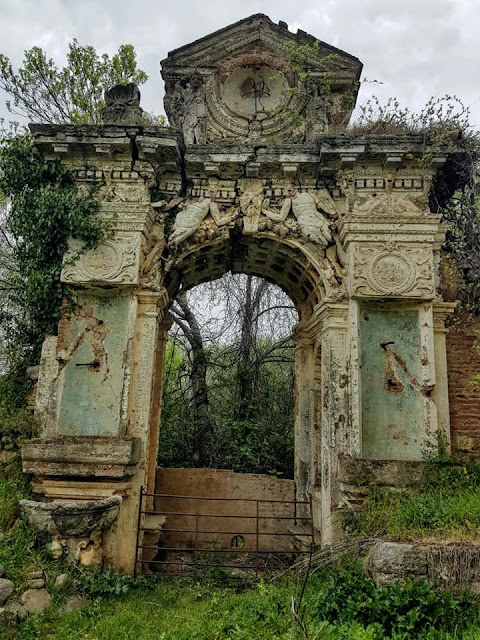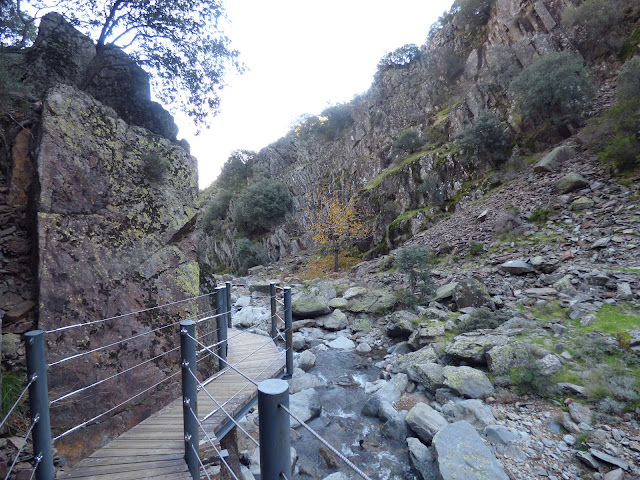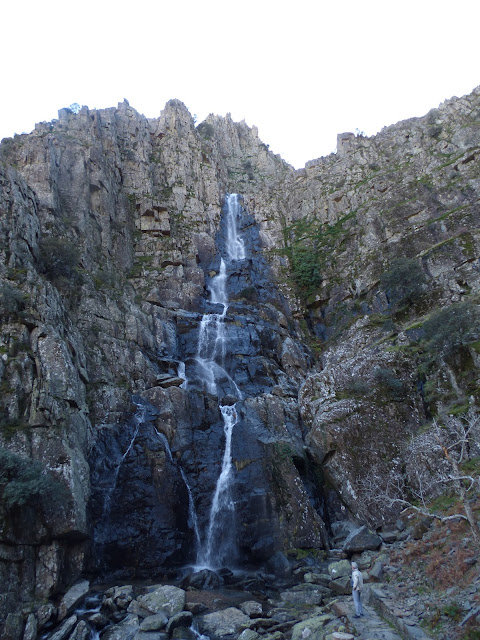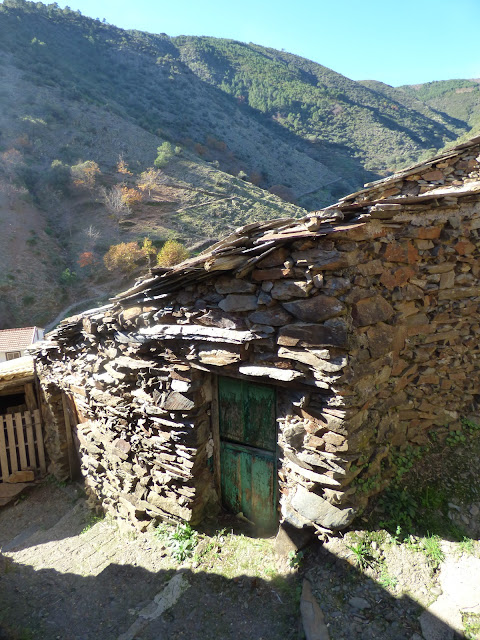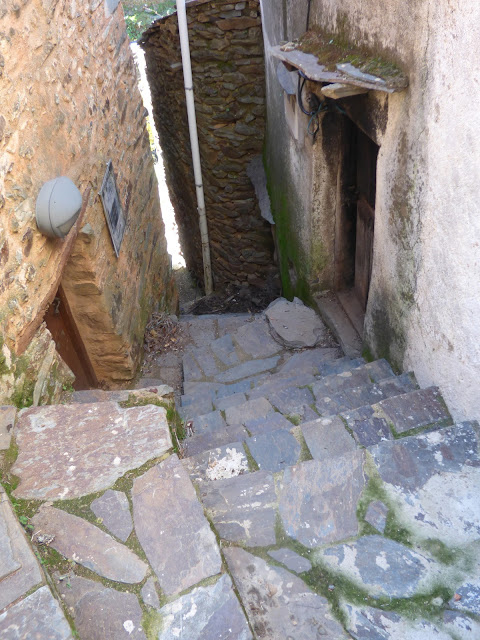A day trip from Finca al-manzil :www.extremadura-rural-retreats.com
A 2 hour drive via Caceres and Coria to Hoyos a village in the Sierra de Gata. An interesting route that crosses the mighty Tajo river and some beautiful dehesa countryside until reaching the green slopes of the Sierra de Gata.
It is recommended to visit Coria on the way or way back.
We walked on an ancient medieval path from Hoyos to the castle of Trevejo, so much more meaningful than just going to Trevejo by car.
Arriving in Hoyos at 10.30, there's time for a coffee before setting off on the walk which takes 2 hours, about 9 kms.
Hoyos is an ancient village originally in the lands owned by the Duke of Alba and ruled by the Bishop of Coria.
The walk starts from the main plaza in front of the church, up Calle Alvarez de Castro, turning left at the very top into Calle Cruz which is where the ancient calleja starts, there is a board with the route.
Continue on a charming cobbled track with gardens and orchards on either side and the occasional donkey. As you climb look back at marvellous views of Hoyos.
At one point there is a Y junction, take the right hand path. You will meet a small back road, turn left until you meet a busy tarmac road which connects Cilleros to Trevejo GR10, turn left and keep walking, about 500m until the sign KM 34 on the other side of the road, there is a gate with the green and white stripes indicating the continuation of the walk. Walk through the woods and out though another gate.



Continue until you come to a sign for Trevejo to the right 1.6 kms. Soon you will see the first views of the castle


Just before entering Trevejo there is the small Ermita del Cristo on the left.

Entering the village through narrow paths lines with ancient stone houses.




https://finca-al-manzil.blogspot.com/2020/03/trip-to-coria-and-castle-of-trevejo-in.html
We were lucky to be picked up in Trevejo by a friend but if you cannot arrange a pickup then you must return to Hoyos on the same route, at least it's mostly downhill on the return walk. Recommended to take a picnic as the times of the bar in Trevejo are intermittent.
We spent the afternoon with our friend Paul Richardson who lives nearby on an idyllic finca blessed with abundant water. Finca El Chabolino
It's a working environment dedicated to self sufficiency; vegetables, fruit trees and vines thrive on the terraced land which includes woods and olive groves. There's also a flock of sheep, coops and hutches for chickens, pigeons and rabbits, last year there were pigs. All this produce is harvested or killed and preserved in various ways, we were to enjoy some delicious examples for lunch.
Paul and his partner Nacho have made a charming farmhouse on the site of an old barn which was integrated into the airy open plan space. In the super efficient kitchen, place of foody miracles, we sat around the table and drank some Pitarra wine made from the grapes of vines planted in the 1930s, a bowl of olives zinged with vivid colour, more like chrome green than the duller olive green.

One of my favourite parts of the meal was the rye bread, not from Lidl but made from rye, grown, harvested, winnowed and ground on the finca and then made into loaves and baked in the kitchen oven.
Later we had a walk around the finca and saw the ancient winnowing contraption used for the rye grain, a thing of beauty which still works perfectly with a hand operated wheel. There's a lily pond fed by two springs, a shady wood with blue hydrangeas and a plunge pool fed by an icy cold spring used for drinking water.

In the woods is a small casita shaded by oak trees, a most wonderful place of tranquillity where Paul retreats to write his books and journalistic articles concentrating on Spain, especially about food, wine and travel.
You can find his informative and amusing books on Amazon
Paul Richardson -Books
















